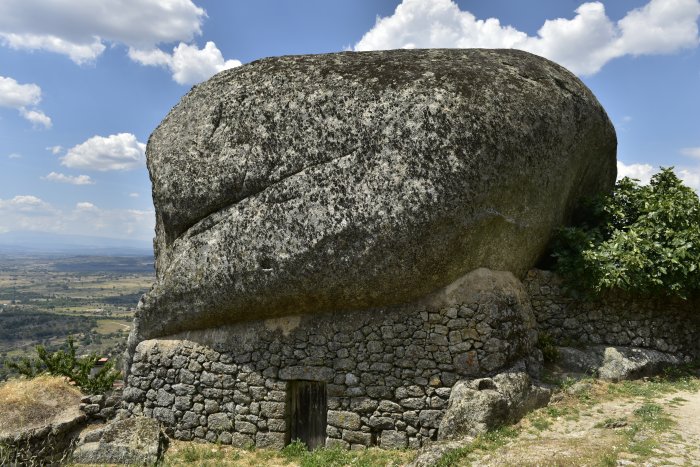Ancient Village Of Monsanto, Miraculously Balanced Giant Boulders And Knights Templar Connection
A. Sutherland - AncientPages.com - Monsanto is a very ancient and remote village made of stone. Here, most of the homes are built into the rocks! The whole place is truly astonishing.
Monsanto Village. Credit: Adobe Stock - LaureanoJesus
Monsanto is located southeast of Serra da Estrela, the highest mountain range in mainland Portugal. The region has a rich history. People lived there in the Paleolithic Era, and archaeologists have found evidence of Roman, Visigoth, and Arabian occupations.
A Lusitanian fortress in the area was conquered and improved by the Roman Army, and it was then occupied by the Visigoths, the Alans, and others during the 8th century.
Finally, the place was conquered by the Christian Army of the first king of Portugal, Afonso Henriques, also known as Afonso the Conqueror.
The Lusitanian fortress was entrusted to Gualdim Païs, Master of the Templar Order in Portugal, who rebuilt it to protect the new kingdom's southern border. He finished the works in 1171, that is to say, two years after building the fortress of Tomar.
Tomar was originally a 12th-century Templar stronghold, but when the order was dissolved in the 14th century, the Portuguese branch became the Knights of the Order of Christ.

Left: 19th-century depiction of King Afonso I Henriques of Portugal, on the ceiling of the Kings' Room, Quinta da Regaleira, Sintra, Portugal. Image credit: via Wikipedia; Right: Dom Gualdim Pais (1118 – 13 October 1195), a Portuguese crusader, Knight Templar. Image credit: Jornal de Sintra
King Afonso Henriques conquered Monsanto from the Moors, and in 1165, the city was given military orders to maintain the reconquered city with Christian hands.
King Alfonso granted it to the Templar monks, who built the Castle under the orders of Gualdim Pais, Grand Master of the Order of Knights Templar.
King Sancho I (1190) and King Afonso III (1217) confirmed the Charter. King Sancho I of Portugal reconstructed and repopulated the fortress because it was severely damaged during the wars with the king of Leonese, an independent kingdom founded in AD 910 and situated in the northwest region of the Iberian Peninsula.
In 1308, King Dinis granted it a Charter, which allowed a fair to occur near the Chapel of São Pedro de Vir-a-Corça. King Manuel I granted it a New Charter in 1510, giving it the right to be a 'town.'
However, Monsanto and its inhabitants could not contemplate a quiet life.
In the middle of the 17th century, Luis de Haro, Minister for Filipe IV, tried to siege Monsanto, but his attempts were unsuccessful.
Later, at the beginning of the 18th century, the Duke of Berwick also laid siege to Monsanto. Still, the Portuguese Army, commanded by the Marquis of Minas, defeated the invader on the slopes of the hill. In 1758, Monsanto was a municipality, having kept this privilege until 1853.
Unfortunately, the impressive medieval Castle of Monsanto was destroyed in the nineteenth century because of an accidental explosion in the ammunition depot of the Castle.
In 1938, Monsanto bestowed the "most Portuguese Village of Portugal." It might seem a little odd because most villages in Portugal don't have houses squeezed between gigantic boulders.
The ancient population carved dozens of narrow streets and passageways right through the center of the boulders. The passages lead the residents upwards and downwards over the rocks and through the village.
One can easily say that this unique village is frozen in time. Its appearance hasn't changed in centuries.
Written by – A. Sutherland - AncientPages.com Senior Staff Writer
Updated on May 29, 2024
Copyright © AncientPages.com All rights reserved. This material may not be published, broadcast, rewritten or redistributed in whole or part without the express written permission of AncientPages.com
Expand for referencesMore From Ancient Pages
-
 Face Of Man From The Lost Medieval Village Of Dzwonowo Reconstructed Using 3D Printing Technology
Archaeology | Jul 20, 2020
Face Of Man From The Lost Medieval Village Of Dzwonowo Reconstructed Using 3D Printing Technology
Archaeology | Jul 20, 2020 -
 Did A Universal Ancient Civilization Give Birth To All Other Cultures Across The World?
Civilizations | May 4, 2021
Did A Universal Ancient Civilization Give Birth To All Other Cultures Across The World?
Civilizations | May 4, 2021 -
 Knowledge Of Secret Ancient Underground Civilization Revealed By Maya Priests
Civilizations | Nov 1, 2018
Knowledge Of Secret Ancient Underground Civilization Revealed By Maya Priests
Civilizations | Nov 1, 2018 -
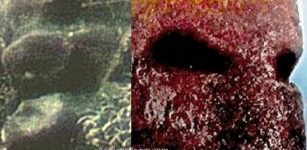 Prehistoric Puzzle: Three Gigantic Stone Heads Of Unknown Origin
Featured Stories | Mar 17, 2020
Prehistoric Puzzle: Three Gigantic Stone Heads Of Unknown Origin
Featured Stories | Mar 17, 2020 -
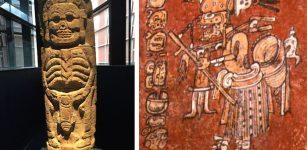 Ah Puch: Evil Death God Of Underworld Who Hated Souls In Maya Beliefs
Featured Stories | Feb 16, 2018
Ah Puch: Evil Death God Of Underworld Who Hated Souls In Maya Beliefs
Featured Stories | Feb 16, 2018 -
 Anne Neville – The Dramatical Story Of The White Queen
Featured Stories | May 22, 2020
Anne Neville – The Dramatical Story Of The White Queen
Featured Stories | May 22, 2020 -
 Varangian Guard: Professional Viking Warriors Highly Valued For Courage, Loyalty, Discipline And Fighting Skills
Featured Stories | Jun 4, 2017
Varangian Guard: Professional Viking Warriors Highly Valued For Courage, Loyalty, Discipline And Fighting Skills
Featured Stories | Jun 4, 2017 -
 Ancient Mystery Of The American Southwest – Unusual Skeletons And Mummies – Part 2
Civilizations | Jul 24, 2018
Ancient Mystery Of The American Southwest – Unusual Skeletons And Mummies – Part 2
Civilizations | Jul 24, 2018 -
 Knowledge Of Divine Alien Beings And High-Tech In Ancient Egypt Described In Sacred Books And Papyrus – Reincarnation, Cloaking Technology And Space Travel – Part 2
Featured Stories | May 16, 2021
Knowledge Of Divine Alien Beings And High-Tech In Ancient Egypt Described In Sacred Books And Papyrus – Reincarnation, Cloaking Technology And Space Travel – Part 2
Featured Stories | May 16, 2021 -
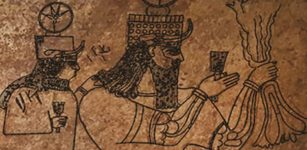 Unexpected Discovery Of Secret Underground Chamber Reveals Mysterious Neo-Assyrian Rock Panel
Archaeology | May 13, 2022
Unexpected Discovery Of Secret Underground Chamber Reveals Mysterious Neo-Assyrian Rock Panel
Archaeology | May 13, 2022 -
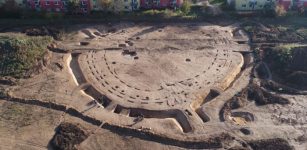 New Photos Of The Puzzling 7,000-Year-Old Circular Structure Near Prague And New Attempt To Solve The Neolithic Mystery
Archaeology | Apr 20, 2023
New Photos Of The Puzzling 7,000-Year-Old Circular Structure Near Prague And New Attempt To Solve The Neolithic Mystery
Archaeology | Apr 20, 2023 -
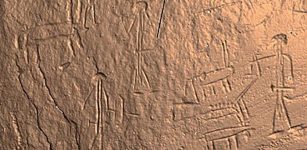 Ancient Rock Engravings Unveil Intriguing Insights Into Human Cultures
Archaeology | Jul 4, 2023
Ancient Rock Engravings Unveil Intriguing Insights Into Human Cultures
Archaeology | Jul 4, 2023 -
 Unsolved Ancient Mystery Of Hand Of Prêles – Unique Discovery Of Ancient Bronze Hand Puzzles Scientists
Archaeology | Sep 28, 2018
Unsolved Ancient Mystery Of Hand Of Prêles – Unique Discovery Of Ancient Bronze Hand Puzzles Scientists
Archaeology | Sep 28, 2018 -
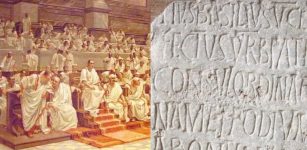 Acta Diurna: World’s First Newspaper Appeared In 131 B.C
Ancient History Facts | Jun 10, 2019
Acta Diurna: World’s First Newspaper Appeared In 131 B.C
Ancient History Facts | Jun 10, 2019 -
 Does A Baffling Artifact Offer Evidence Of Ancient Extraterrestrial Visitation In New Zealand? – The Discovery – Part 1
Featured Stories | Jul 20, 2020
Does A Baffling Artifact Offer Evidence Of Ancient Extraterrestrial Visitation In New Zealand? – The Discovery – Part 1
Featured Stories | Jul 20, 2020 -
 1,500-Year-Old Christian Reliquary Found In An Unknown Church In Irschen, Austria
Archaeology | Jun 26, 2024
1,500-Year-Old Christian Reliquary Found In An Unknown Church In Irschen, Austria
Archaeology | Jun 26, 2024 -
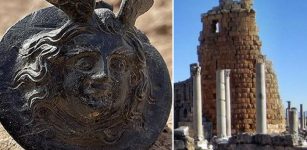 1,800-Year-Old Military Medal with Medusa Head Unearthed In Ancient City of Perge (Perrhe), Southeastern Turkey
Archaeology | Oct 11, 2022
1,800-Year-Old Military Medal with Medusa Head Unearthed In Ancient City of Perge (Perrhe), Southeastern Turkey
Archaeology | Oct 11, 2022 -
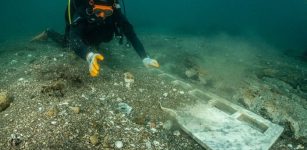 Underwater Nabataean Temple With Marble Altars Discovered In Pozzuoli
Archaeology | Apr 12, 2023
Underwater Nabataean Temple With Marble Altars Discovered In Pozzuoli
Archaeology | Apr 12, 2023 -
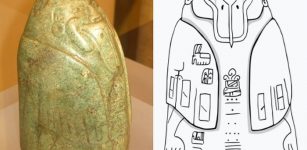 Strange Tuxtla Statuette And Its Undeciphered Inscription – An Epi-Olmec Puzzle
Artifacts | Mar 14, 2018
Strange Tuxtla Statuette And Its Undeciphered Inscription – An Epi-Olmec Puzzle
Artifacts | Mar 14, 2018 -
 Researchers Reconstruct Genome Of Centuries-Old E. Coli Using Fragments Extracted From An Italian Mummy
News | Jun 18, 2022
Researchers Reconstruct Genome Of Centuries-Old E. Coli Using Fragments Extracted From An Italian Mummy
News | Jun 18, 2022

